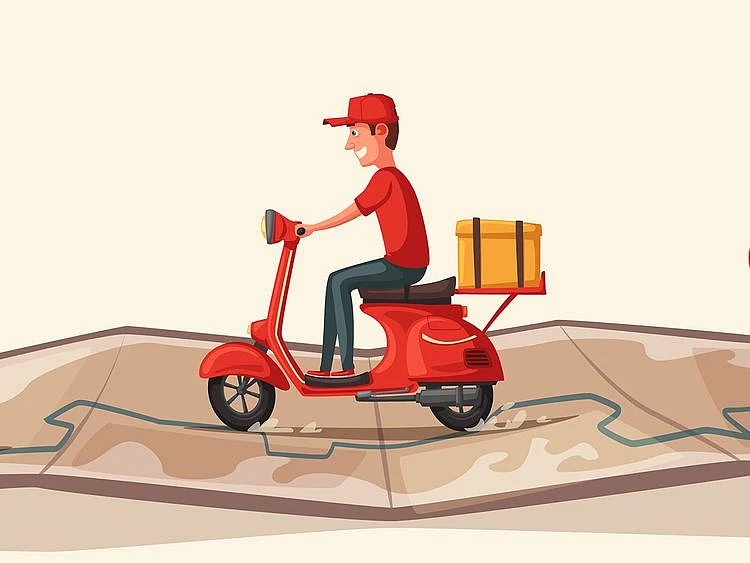UAE’s e-retailers struggle with 0% delivery charges – but will shoppers pay extra?
When delivery charges are added, shoppers tend to lower their order size

Dubai: Are you a shopper who insists on zero delivery charges before placing an order? If yes, then spare a thought for the ecommerce platform prospects.
While the big guns can waive off delivery charges – or do so when the order placed is of a certain size – for the mid- to smaller players, it is another cost they struggle with as they try to gain shopper attention and traction for their portal.
“Across the board, delivery costs are in the range of 5-15 per cent of a typical ecommerce transaction,” said Rick Malhotra, Finance Director at Elfab Co.. “When you waive the cost, you either absorb it or build it into your prices. That might not always be possible if your items are already priced competitively.
“Customers are not willing to pay a delivery fee for basic groceries, but most likely pay for delivery of luxury goods or electronics. We have had to reassess our position on delivery charges - and we feel that this will be a point of discussion going forward not only for us but for several of the players in the market.
That is the catch. Unless focussed on luxury or niche offerings, the majority of ecommerce portals work on the barest of margins and where they let the volumes compensate for every cost. The likes of Amazon and noon have the scale, and so do those portals launched by the big retail houses in the UAE and Gulf.
‘When’ matters
Ecommerce sites find that having stocks of in-demand items alone will not help their cause – they need to give a firm commitment of when they expect to deliver. That in itself adds to the cost pressures.
“The cost of delivery depends upon the business model and logistics arrangement between the e-commerce venture and the logistics partner,” said Monish Chandiramani, founder of the grocery app Yeepeey. “The current delivery charges in the Q-commerce space (which promises deliveries in 30 minutes or so) ranges from $1.5-$3 in some cases.”
Q-commerce platforms came into their own during 2020-21, when UAE consumers were having everything delivered to their doorsteps. And most of them were offering free-delivery as part of their offering, as they scraped for market share against online channels operated by supermarkets.
Offering something for free and then bringing in a charge is the tricky part. E-retailers subsequent efforts suggest they struggled to get consumers to part with the delivery costs.
“One of the key aspects for developing the best delivery strategy for grocery ventures in 2021 involves getting the delivery pricing model right,” said Aarohi Surya, Co-founder and Chief Operating Officer of Yalla Veggie. “It needs to be low enough that customers are willing to pay for it. At the same time, it needs to be priced high enough that ventures can be profitable.
“Research in the region show that high delivery cost is one of the leading causes for cart abandonment. With our calculation, we’ve seen that if the delivery cost increases by even Dh1, a customer’s net value drops by 75 per cent, leading to an overall unsustainable model.”
Hit pause on free shipping?
Some ecommerce vendors have become strict with when they offer free delivery, preferring to limit these to special promotion periods such as during the Black Friday phase. These retailers, however, warn, they still cannot afford to take a carte glance approach on this.
“Another challenge when it comes to grocery delivery is the high competition,” said Surya of Yalla Veggie. “It is now possible to easily switch between apps to compare the offers - and the delivery costs. This means that the ventures need to spend a lot on user retention, which may mean slashing the delivery charges.”
That’s one loop ecommerce vendors will find difficult to break out from. But the cost of delivery - especially when offered free - will come back to bite again and again, and more so when shoppers are likely to get even more sensitive about costs.
For now, free delivery is one tough sell for vendors.
Unboxed
‘Unboxed’ is proving a hit in ecommerce channels Got an unboxed smartphone or gadget lying around at home? You are better off selling it. “There is a growing number of customers open to the idea of buying a refurbished product if they can get a good warranty from a reliable seller,” said Niranjan Gidwani, a retail consultant. “One of the reasons this is becoming a growing - and viable - proposition is because it is not viable for brands, manufacturers, or distributors to store returned goods or to repair them. “It is these products which are sold to refurbished/open box dealers at deep discounts. The refurbished or open-box sellers repair, touch up, repackage these products, and sell them at significantly lower prices. Products like mobiles, wearables, and laptops sell quite well online. "In the GCC, what has been observed is that out of the traditional distributors, intermediaries, and fulfilment partners of new products of key brands, few have caught on to this unboxed opportunity area. Online aggregators and startups are taking up this role."
Network Links
GN StoreDownload our app
© Al Nisr Publishing LLC 2025. All rights reserved.